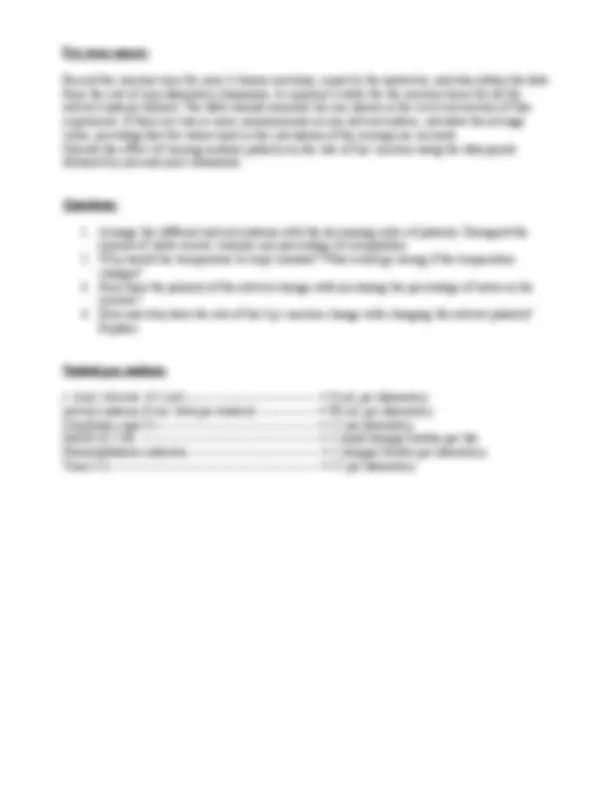



Study with the several resources on Docsity

Earn points by helping other students or get them with a premium plan


Prepare for your exams
Study with the several resources on Docsity

Earn points to download
Earn points by helping other students or get them with a premium plan
Community
Ask the community for help and clear up your study doubts
Discover the best universities in your country according to Docsity users
Free resources
Download our free guides on studying techniques, anxiety management strategies, and thesis advice from Docsity tutors
Typology: Lab Reports
1 / 2

This page cannot be seen from the preview
Don't miss anything!


Cerritos Community College
(Part 2: Solvent Effects on SN1 Reactivity) Waste Disposal: All the reaction mixtures should be placed in the halogenated organic waste container. Objective: To study the effects of solvent polarity and proticity on the rate of SN1 reactions. Experiment Overview: Several types of solvent systems, varying in polarity and proticity (All else being equal) the rates of the reactions will be measured. The solvent systems are shown in the table below: It is useful at this point, to think about the polarities of the solvent systems (disregarding the different mixing percentages) and rank the solvent systems utilized, according to their polarities. Also, think about the effect of changing the percentage of water in changing the polarities of the given solvent systems. The general equation for the reactions is shown below, where the substrate, tert - butyl chloride reacts with the alcohol (or water) to form an ether and hydrochloric acid byproduct. A certain concentration of the acidic byproduct will serve as the visual indicative for the endpoint of the reaction, since there will be an NaOH concentration and some phenolphthalein indicator present in the reaction mixture. Once enough acid gets produced in the reaction to neutralize the base present, the indicator will change color, which will be marked as the reaction endpoint. t- Bu
Cl + ROH t - Bu
OR + HCl Procedure: With your instructor’s help, choose 3 solvent systems, using either different ratios of one solvent system or the same ratio for different solvent systems. Label 3 clean and dry test tubes. To each test tube add 2.0 mL of the solvent system and 3 drops of 0.5 M NaOH solution containing phenolphthalein indicator. Cork the test tubes and place them into a water bath equipped with a thermometer and water at 30.0 + 1 oC. A Styrofoam cup placed in an empty beaker makes a convenient insulated container for the bath. After a few minutes of allowing the test tubes to equilibrate with the temperature of the bath, add 3 drops of tert - butyl chloride to each test tube. Record the time of addition and shake the contents of the test tubes thoroughly, in order to insure complete mixing. Also, swirl the test tubes intermittently. Record the time required for the disappearance of the pink indicator color. This will be the visual indicative for the completion of the reactions. Remember to monitor the temperature and keep it within 1oC of 30oC (the temperature is a constant value and not a variable). Solvent System Percentage acetone: water 55:45 60:40 65: 35 * ethanol: water 55:45 60:40 65: 35 70: methanol: water 55:45 60:40 65: 35 70:
For your report: Record the reaction time for your 3 chosen reactions, report to the instructor, and also obtain the data from the rest of your laboratory classmates, to construct a table for the reaction times for all the solvent systems utilized. The table should resemble the one shown in the overview section of this experiment. If there are two or more measurements on one solvent system, calculate the average value, providing that the values used in the calculation of the average are accurate. Discuss the effect of varying medium polarity on the rate of SN1 reaction using the data points obtained by you and your classmates. Questions: